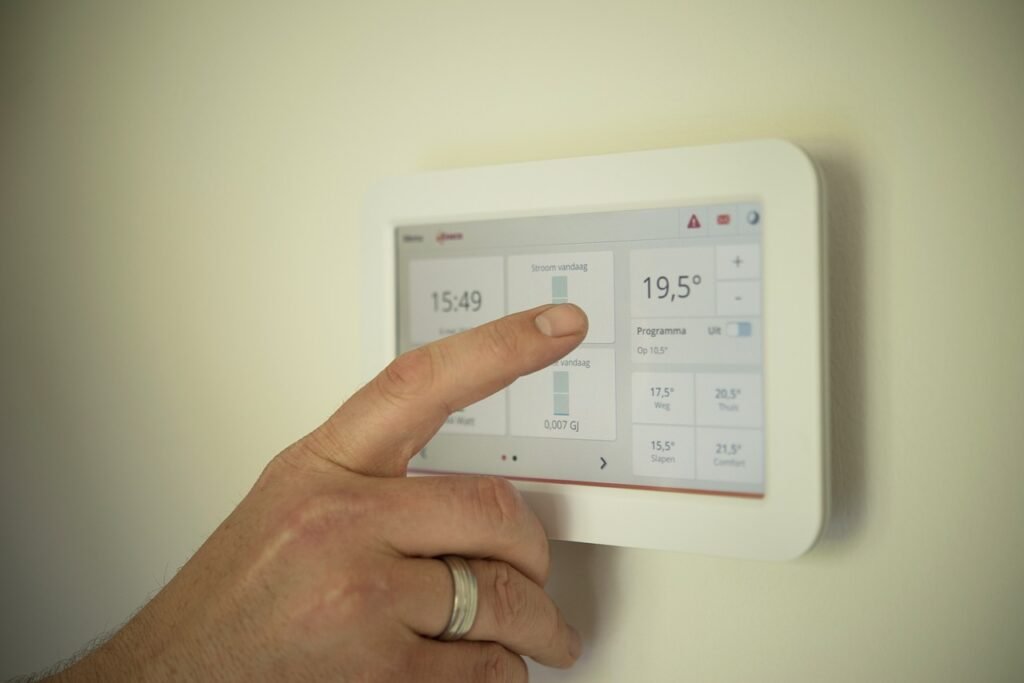Common Issues with Furnace Heating Elements
A furnace is the heart of your home’s heating system. Its heating element is the core component that generates warmth.
But what happens when this crucial part starts to fail?
Your comfort, energy bills, and the lifespan of your furnace can all be affected. Recognizing common issues with furnace heating elements is key to maintaining a reliable and efficient HVAC system.
This guide will help you understand these issues. It will cover signs of a failing heating element, causes of these problems, and steps to resolve them.
Remember, while knowledge is power, safety is paramount. Always consider professional help for complex HVAC issues. Let’s dive in.
Understanding Furnace Heating Elements
Heating elements are vital parts of your furnace system. They are responsible for generating the heat that warms your home. These elements transform electrical energy into heat through resistance.

A well-functioning heating element ensures your furnace runs efficiently. It affects both your comfort and energy bills. Understanding their function and potential issues can lead to better maintenance decisions.
The Role of Heating Elements in Your Furnace
Heating elements serve as the furnace’s primary source of heat. When activated, they generate heat, which is then distributed throughout your home.
This process is essential for maintaining a comfortable indoor environment. A malfunctioning element can lead to uneven temperatures and increased energy use, making its role crucial.
Types of Heating Elements
Various types of heating elements are used in furnaces. Each type has specific features and benefits suited to different furnace models.
- Electric Furnace Elements: Common in electric furnaces.
- Gas Furnace Elements: Specific to gas-powered systems.
Understanding these types helps in choosing the right replacement when needed.
Recognizing Common Heating Element Issues
Being able to recognize issues early can prevent major furnace problems. Common signs include inconsistent heating and system malfunctions. Regular observation can help identify these symptoms before they escalate.
Another common issue is when your furnace runs constantly without effectively heating your home. This can often indicate a problem with the heating element. Addressing such issues swiftly can prevent further complications.
If you notice any unusual sounds or smells, it could suggest a malfunctioning element. It’s crucial to investigate these signs as they could indicate wear or damage. Professional help is recommended to assess and resolve these issues safely.
Insufficient Heat or No Heat Production
When the furnace produces little or no heat, the heating element could be failing. This is one of the most common problems homeowners encounter. It results in discomfort during colder months.
Inspecting the element and testing it can reveal if it’s the source of the issue. If left unchecked, this problem can lead to increased energy bills and reduced home comfort. Professional diagnosis ensures accurate identification and resolution.
Frequent Cycling and Overheating
A furnace that cycles on and off frequently may indicate an overheating element. Overheating is often due to airflow restrictions, such as clogged filters or blocked vents.
Addressing this swiftly can prevent further damage to the element and furnace. Regular maintenance helps identify and resolve issues like these. A timely solution saves cost and extends the element’s lifespan.
Visible Damage or Wear
Visible damage or signs of wear on a heating element are red flags. This might include cracks, burns, or breaks in the element.
Such physical issues can affect the furnace’s performance significantly. Routine inspections can help spot these early, prompting timely replacements. A professional can ensure safe inspection and accurate repairs.
Causes of Heating Element Failures
Understanding the causes of heating element failures can help in preventing them. Several factors contribute to these malfunctions. Awareness and prevention are key to maintaining a reliable heating system.
Electrical issues often lead to heating element failure. Similarly, a malfunctioning thermostat can cause improper operation. Regularly inspecting these components helps avoid unexpected breakdowns.
Neglecting routine maintenance is another significant cause. Clogged filters and dirt build-up contribute to overheating. Frequent checks and cleaning can prevent these common problems.
Electrical Issues and Power Surges
Electrical problems can severely affect heating elements. Common issues include blown fuses or tripped circuit breakers. These problems can interrupt the element’s operation, leading to failure.
Power surges are also a risk factor for heating elements. They can cause immediate damage by overpowering the element. Installing surge protectors can provide a safeguard against these events.
Thermostat Malfunctions
A malfunctioning thermostat can disrupt the furnace’s operation. It can send incorrect signals, causing the heating element to work improperly. This often results in uneven heating or increased energy usage.
Regularly testing and calibrating the thermostat can prevent these issues. If problems persist, professional evaluation is advised. A well-functioning thermostat is crucial for optimal furnace performance.
Lack of Maintenance and Dirty Filters
Neglecting maintenance is a common cause of heating element issues. Filters that are dirty or clogged force the furnace to work harder. This strain can lead to overheating and eventual element failure.
Regularly cleaning and replacing filters can alleviate this problem. Maintenance also includes checking for any signs of wear on the element. Consistent care can significantly extend the life of your furnace.
The Importance of Professional Diagnosis and Repair
Professional diagnosis is crucial for resolving heating element issues effectively. HVAC systems are complex, requiring expert evaluation for accurate identification. Misdiagnosis can lead to unnecessary expenses and prolonged discomfort.
Repairing a heating element is not just about fixing the symptom. Understanding the root cause ensures long-term reliability. Professionals use specialized tools and have the experience to provide comprehensive solutions, ensuring safety and efficiency.
Risks of DIY Heating Element Repairs
Attempting DIY repairs on heating elements poses significant risks. Without proper knowledge, there’s a danger of injury or further damage. Mistakes can lead to electrical hazards or costly repairs.
Furthermore, DIY attempts might void warranties, resulting in additional expenses. Certified technicians adhere to safety standards and regulations. It’s always safer and more efficient to trust professionals with your HVAC repairs.
Direct AC 24/7’s “Fixed Right Promise”
At Direct AC 24/7, customer satisfaction is a top priority. Our “Fixed Right Promise” assures you that if the job isn’t done correctly, you don’t pay. This commitment reflects confidence in our expertise.
Choosing Direct AC 24/7 means selecting service excellence and peace of mind. We ensure transparency and quality in every repair. Trust our professionals to handle your heating element needs efficiently and effectively.
Replacement Heating Element for Electric and Gas Furnaces
When a heating element fails, selecting the right replacement is vital. Electric and gas furnaces have different requirements, which influence the type of heating element needed. Using the correct replacement ensures your furnace operates efficiently and safely.
Electric furnace elements are typically more straightforward to replace, while gas furnaces involve more specific components. Professional guidance can help you choose the right part, guaranteeing compatibility and enhancing system longevity.
Choosing the Correct Replacement Element
Selecting the correct heating element requires understanding the specifications of your furnace. Mismatches can lead to inefficiency or even damage. Consulting with a trusted HVAC professional helps avoid these pitfalls.
Professionals can assess your system’s needs accurately, ensuring the replacement part aligns with the manufacturer’s specifications. This approach extends the life of your furnace and maintains its energy efficiency, saving you costs in the long run.
The Benefits of Upgrading Your Heating Element
Upgrading to a high-quality heating element offers numerous benefits. It can improve your furnace’s performance, leading to better energy efficiency and lower utility bills. Modern elements often boast enhanced durability, reducing the frequency of replacements.
This upgrade also contributes to consistent and reliable home comfort. Investing in a top-tier heating element is a wise decision that supports both immediate and long-term needs. Choose a reputable HVAC service to guide you in this valuable upgrade.
Maintaining Your Furnace for Longevity and Efficiency
Proper maintenance plays a crucial role in keeping your furnace running efficiently and extending its lifespan. Regular upkeep prevents unexpected breakdowns and helps identify issues before they escalate. With a few straightforward tips, you can ensure your furnace performs optimally throughout its life.
Regular maintenance involves several tasks that every homeowner should keep in mind:
- Replacing filters regularly to improve airflow
- Scheduling yearly professional inspections
- Cleaning ducts and vents to enhance system performance
Implementing these practices will contribute significantly to your furnace’s longevity and reliability.
Regular Maintenance Tips
Routine maintenance of your furnace shouldn’t be overlooked. Start by checking and replacing air filters every few months. Clean filters improve airflow, which is key for efficient operation.
Additionally, schedule annual professional inspections. Experts can detect and rectify minor issues, preventing them from worsening over time. These steps are both cost-effective and essential for sustaining your furnace’s efficiency.
The Role of Insulation and Home Sealing
Insulation and home sealing are vital for furnace efficiency. Properly insulated homes retain heat better, reducing the workload on your heating system. This efficiency keeps energy bills in check and eases pressure on the furnace.
Check windows and doors for drafts and seal them appropriately. Addressing insulation helps maintain an even temperature, ensuring your furnace doesn’t work harder than necessary. By optimizing your home’s insulation, you ensure a smoother and more cost-effective heating experience.
Conclusion and Call to Action
Understanding and addressing common furnace heating element issues can significantly improve your home’s comfort and energy efficiency. Prioritize regular maintenance and rely on professionals to tackle complex issues. If you face persistent problems or need expert advice, contact Direct AC 24/7 for reliable, transparent HVAC solutions. Your comfort is ou
